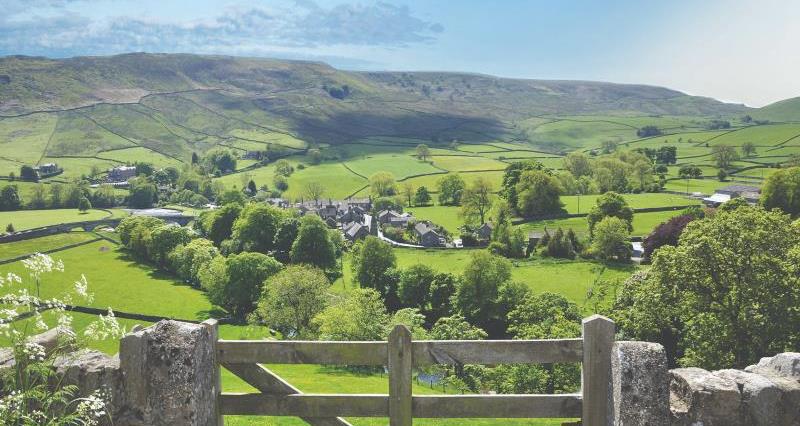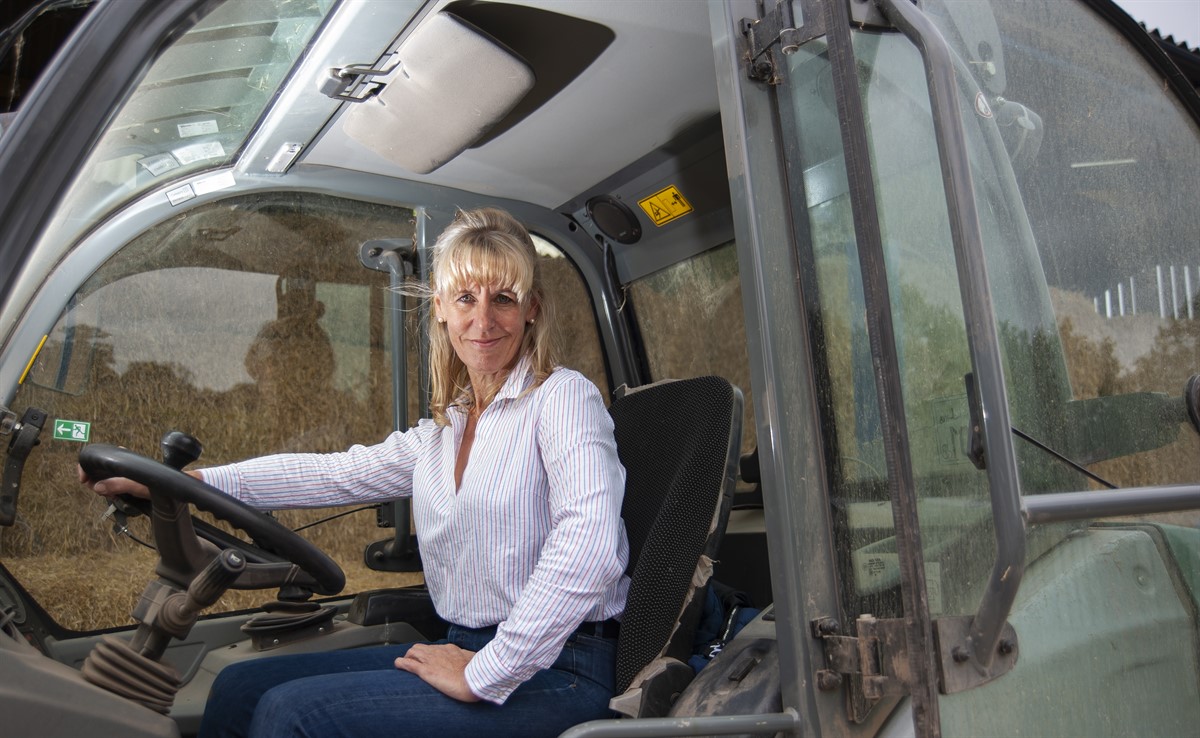On 31 January 2023, the government published its Environmental Improvement Plan, setting out a delivery plan for its approach to halt and then reverse the decline in nature.
Building on the 25 Year Environment Plan
The EIP23 (Environmental Improvement Plan 2023) is the next version of the 25YEP (25 Year Environment Plan), covering a number of different policy areas. It will be reviewed again in 2028.
NFU President Minette Batters said: “Britain’s farmers are passionate about protecting and enhancing our great British countryside.
“We take great pride in carrying out a huge amount of work to provide habitats which support wildlife and plant species, as well as protect watercourses. And as part of delivering our ambition to reach net zero by 2040, we are already working in a variety of ways to reduce emissions.
Commitment to food security
“We share the government’s environmental ambitions; we simply ask for them to sit alongside equally ambitious plans for our food production to protect and enhance the UK’s food security.
“The EIP’s success will depend on the government working closely with farmers across all sectors and systems, especially when delivery is linked to the new Environmental Land Management schemes.”
NFU President Minette Batters
NFU members can download our briefing sumarising key aspects of the EIP: Environmental Improvement Plan and Environmental Principles Policy Statement
“As recent months have shown, food supply chains are fragile, but we can and must do so much more, supported by the right policy framework that values both food and the environment in which it is produced.
“It really is in everyone’s interests to ensure climate and environmentally friendly British farming in the future, with farmers producing quality sustainable food alongside their work in caring for the environment.
“Crucially, this new framework and its targets must be ambitious but deliverable. Its success will depend on the government working closely with farmers across all sectors and systems, especially when delivery is linked to the new Environmental Land Management schemes.”
Impact on farmers and growers
Our advisers have summarised the areas of relevance to farmers and growers. These are split into the following areas:
Nature
- Create and restore at least 500,000 hectares of new wildlife habitats, starting with 70 new wildlife projects including 25 new or expanded National Nature Reserves and 19 further Nature Recovery Projects.
- Enable 65 to 80% of landowners and farmers to adopt nature friendly farming practices on at least 10 to 15% of their land by 2030. They will also be supported to create or restore 30,000 miles of hedgerows a year by 2037 and 45,000 miles of hedgerows a year by 2050.
- Launch of a multi-million pound Species Survival Fund to protect our rarest species - from hedgehogs to red squirrels - and support the 2030 species abundance target.
Water
- Restore 400 miles of river through the first round of Landscape Recovery projects and establishing 3,000 hectares of new woodlands along England’s rivers.
- Tackle nutrient pollution, including by upgrading 160 wastewater treatment works by 2027 and providing increased advice and incentives to support sustainable agricultural techniques.
- Better integrate water and flood policy, for example by reforming river basin management plans and flood risk management plans to maximise the multiple benefits.
- Deliver an investment plan to improve coastal and flood defences, including £100 million on the most frequently flooded areas.
- Reward farmers for actions to reduce risks and impacts from floods, droughts, and wildfires through our new future farming schemes.
Air
- Reduce ammonia emissions by using incentives in our new farming schemes, investing £13 million in slurry storage infrastructure in 2023 and considering expanding environmental permitting conditions to dairy and intensive beef farms.
Soil
- Bring 40% of England's agricultural soil into sustainable management by 2028 and up to 60% by 2030.
- Establish a soil health indicator, publish a baseline map of soil health, support farmers to establish their own soil health baseline, provide a methodology for collecting soil health information, and share guidance and best practice.
Lowland peat
- Launch a £6.6 million lowland peat research and development programme and develop new farming scheme options to support the restoration of lowland peat and wetter farming methods.
Pesticides
- Help farmers transition to Integrated Pest Management with investment and advice, utilising nature to tackle pests and reducing reliance on manufactured pesticides.
Waste
- Introduce new interim targets for 2028 to reduce different types of waste, including plastic, glass, metal, paper, and food.
- Work with business to implement packaging extended producer responsibility from 2024 to enable recycling of packaging.
Supply chains
- Implement due diligence requirements set out in the Environment Act 2021 to tackle illegal deforestation in our supply chains.
Climate change
- Update on progress and plans to reach net zero.
- Publish a Land Use Framework in 2023, setting out how to balance multiple demands on our land including climate mitigation and adaptation.
- Publish the third National Adaptation Programme (NAP3) in 2023 that will set out the five-year strategy to build the UK’s climate resilience.
Access and protected landscapes
- Fulfil a new commitment that everyone should live within 15 minutes walk of a green or blue space.
- Extend the delivery of the Farming in Protected Landscapes programme until 2025.
NFU position
The EIP sets out progress since the 25YEP, as well as commitments, targets and how these will be delivered.
We will continue to ask for clarity on the deliverability of the targets. While ambitious, they should be deliverable and compliment equally ambitious plans for domestic food production and UK food security.
Farming, through regulation and funding from public and private schemes, is identified as a key contributor to a number of the goals, commitments and targets set out in the EIP23.
As an example, farming is expected to contribute 80 to 100% of the target to restore or create more than 500,000 hectares of wildlife-rich habitat outside of protected areas by 2042.
At the same time, the EIP23 also makes many references to the dual role of farmers taking care of the environment, alongside food and other production.
Farming transition schemes
ELMs, Countryside Stewardship Plus and other schemes such as Catchment Sensitive Farming and the Slurry Infrastructure Grant will be key elements to enable delivery of the EIP23 ambitions.
We welcome the news on extension of funding for Farming in Protected Landscapes for another year, until 2025 and we remain committed to working with Defra to improve this and the other farming transition schemes.
Green finance
This is a cross-cutting theme underpinning delivery of the goals, with the aim to raise at least £500 million per year of private finance for nature’s recovery by 2027, and more than £1 billion by 2030.
We will continue to promote the NFU’s 5 key principles necessary for successful environmental markets.
Regulatory reform
We will engage with Defra on its commitments for regulatory reform (such as river basin management plans).
On plans to expand environmental permitting to the dairy and cattle sectors, our preference is for consideration of an alternative industry-led approach, which we will continue to develop and discuss with Defra.
Access
The commitment that everyone should live within 15 minutes walk of a green or blue space is ambitious. We will continue to advocate the need for the development of a modern and adaptable public access network that meets the needs of users and farm businesses.
Land Use Framework
With competition for land use ever increasing, it is vital that the Land Use Framework recognises the need for our countryside to remain a multifunctional, dynamic space.
Greater access to data on land capability, such as more detailed agricultural land classification, will be needed to help inform business decisions and maximise land use efficiency.


